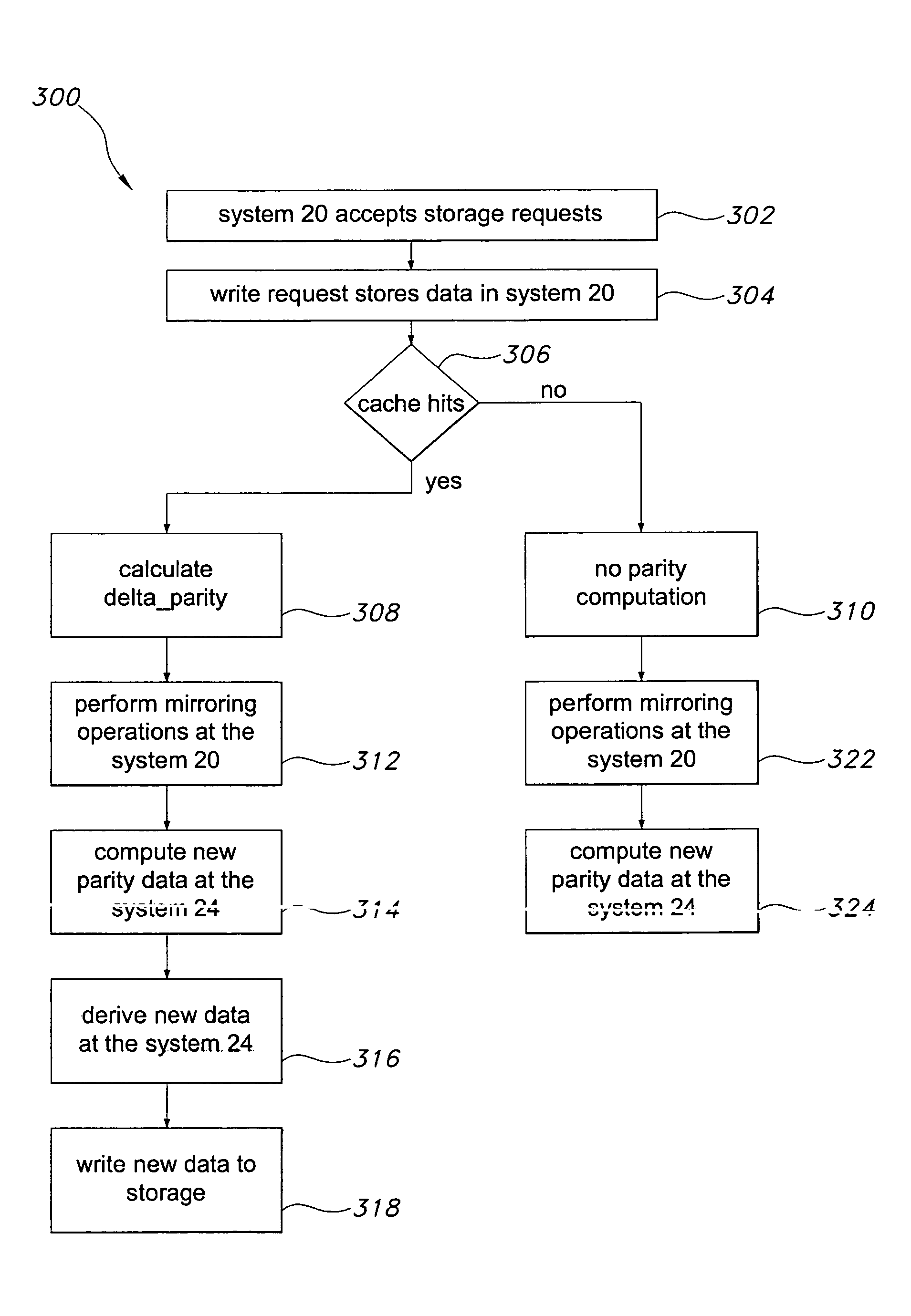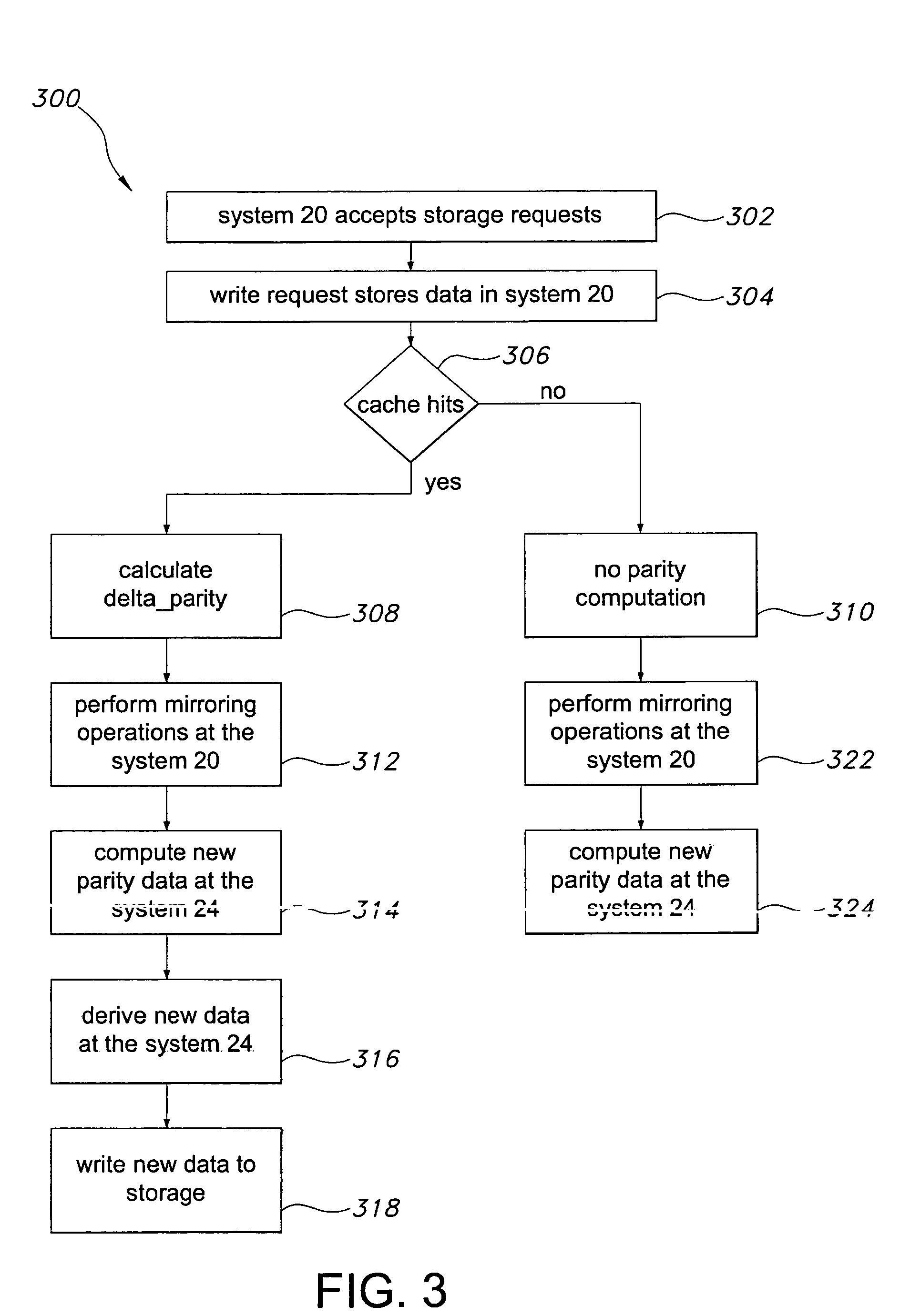Data replication method over a limited bandwidth network by mirroring parities
a data replication and network technology, applied in computing, error detection/correction, instruments, etc., can solve the problems of requiring high network bandwidth on a wide area network, affecting the efficiency of data replication, so as to reduce the amount of data that needs to be transmitted over the network and achieve the effect of reducing the amount of data transferred, reducing the cost of leased lines of tens or hundreds of megabytes, and efficient resource utilization
- Summary
- Abstract
- Description
- Claims
- Application Information
AI Technical Summary
Benefits of technology
Problems solved by technology
Method used
Image
Examples
Embodiment Construction
[0027]The present invention overcomes many of the prior art problems associated with remote replication of data. The advantages, and other features of the system disclosed herein, will become more readily apparent to those having ordinary skill in the art from the following detailed description of certain preferred embodiments taken in conjunction with the drawings which set forth representative embodiments of the present invention and wherein like reference numerals identify similar structural elements.
[0028]Referring now to the FIG. 1, there is shown a schematic diagram of an environment 10 that implements the archiving methodology of the present disclosure. The archiving methodology is a real-time, asychronous mirroring that is particularly useful over low bandwidth network connections. The following discussion describes the components of such a environment 10.
[0029]The environment 10 has a primary location 12 connected with a remote backup location 14 by a network 16. In the pre...
PUM
 Login to View More
Login to View More Abstract
Description
Claims
Application Information
 Login to View More
Login to View More - R&D
- Intellectual Property
- Life Sciences
- Materials
- Tech Scout
- Unparalleled Data Quality
- Higher Quality Content
- 60% Fewer Hallucinations
Browse by: Latest US Patents, China's latest patents, Technical Efficacy Thesaurus, Application Domain, Technology Topic, Popular Technical Reports.
© 2025 PatSnap. All rights reserved.Legal|Privacy policy|Modern Slavery Act Transparency Statement|Sitemap|About US| Contact US: help@patsnap.com



